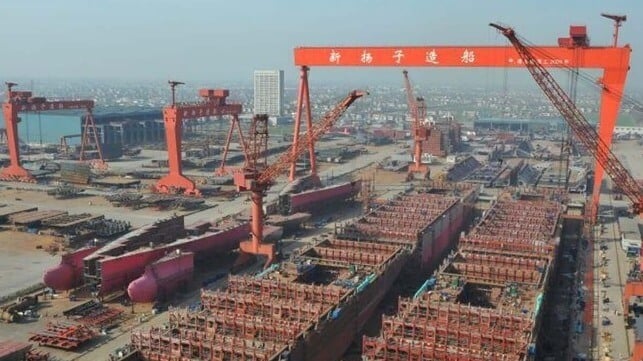Boxship Ordering Surge Drives Record Growth for Dual-Fuel Propulsion

Orders for alternative-fueled newbuilds hit an all-time monthly record in October, driven by high demand for LNG-powered boxships, according to the latest data from DNV.
Last month, shipowners placed orders for 97 ships with dual-fuel propulsion. LNG dominated the field with 66 ships, including 58 boxships. The rest were methanol-fueled, including 20 dual-fuel methanol bulkers. While methanol is no longer outpacing LNG as the alternative fuel of choice, October was the strongest month for methanol-fueled ship orders yet this year.
"The growth has clearly been led by LNG. Since July, 177 new orders for LNG fueled vessels have been placed, compared to 52 in the first six months of the year," said Jason Stefanatos, Global Decarbonization Director at DNV Maritime. "Methanol is also demonstrating some resilience. With 162 orders for methanol-fueled vessels placed in the first 10 months of the year, the total figure for 2023 has already been surpassed."
In total, more than 460 new alternative-fueled ships have been ordered since January, up by a staggering 46 percent year-over-year. Part of that drive comes down to record high demand for new container ship tonnage, plus the willingness of ocean carriers to place big bets on dual-fuel ships.
Deliveries of new boxships are also surging, the result of a multiyear boom in ordering activity. According to BIMCO, deliveries of container ships have already reached a new annual record - with two months left to go. 410 ships with a capacity of 2.5 million TEU were delivered in the first 10 months, beating out the 2.3 million record set just last year, according to BIMCO chief analyst Niels Rasmussen.
These deliveries have translated directly into a massive nine percent rate of fleet growth over the year to date. Freight rates are high and owners are reluctant to scrap old tonnage, according to ship-recycling brokers, so the new deliveries are almost purely additive to the total fleet size.
Rasmussen notes that the deluge of deliveries will likely continue, given the frenetic pace of new orders.
"So far this year, contracting is already more than double that of last year’s total and 286 ships with a capacity of 3.3 million TEU have been added to the order book . . . 25% of the size of the total fleet," said Rasmussen.
The Red Sea crisis has absorbed the extra tonnage so far, and the rapid pace of deliveries has not dented rates. If and when the demand for boxship capacity cools, it should be possible to slow down fleet growth by scrapping old tonnage, he said.
"After a few years of very low recycling, 3.4 million TEU will be more than 20 years old next year and prime candidates for recycling in the coming years. If they are all recycled during the next five years, fleet growth from the current order book can be limited to 14 percent," said Rasmussen.
